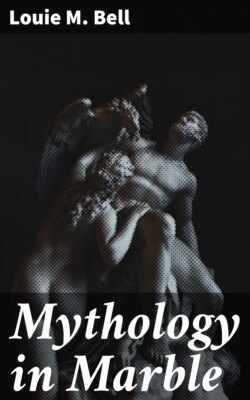Читать книгу Mythology in Marble - Louie M. Bell - Страница 6
На сайте Литреса книга снята с продажи.
ОглавлениеJuno.
“The Ox-eyed Queen.”
Table of Contents
“Where, O Juno, is the glory
Of thy regal look and tread?
Will they lay forever more, thee
On thy dim, straight, golden bed?
Will they queendom all lie hid
Meekly under either lid?”
—E.B. Browning.
STORY.
THE GODDESS OF MARRIAGE.
Table of Contents
“Wedding is great Juno’s crown:
Oh, blessed bond of board and bed!
’Tis Hymen peoples every town;
High wedlock then be honored;
Honor, high honor and renown,
To Hymen, god of every town.”
—Shakespeare.
Juno’s marriage to Jupiter was one of the most auspicious events that ever took place on Mt. Olympus. To their union were traced all the blessings of nature and when they met as on Mt. Ida in a golden cloud, sweet and fragrant flowers sprang up around them.
It is recorded, however, that they had many quarrels and wranglings, the blame of which was usually traced to Juno. She was frequently angry, jealous and quarrelsome, and her character was proud and not free from bitterness. The Romans believed that every woman had her Juno who protected her through life. The peacock was sacred to Juno.
“The white-armed Juno there enthroned was seen,
Sovereign of heaven and Jove’s imperious queen;
Still near his queen her watchful peacock spreads
His thousand eyes, his circling luster sheds;
Where’er she bends the living radiance burns
And floats majestic as the goddess turns.”
—Lope de Vega.
INTERPRETATION.
Juno is the personification of what may be called the “female powers of the heavens, that is, the atmosphere with its fickle, yet fertilizing qualities.” That phase of her life as bride is obviously associated with the phenomena of the heavens in the spring time when the return of dazzling light and warmth spreads everywhere affectionate gaiety and blooming of new life.
ART.
This marble head is in the Villa Ludovisi, Rome, and is considered the most beautiful of all the representations of Juno. It expresses great energy of character united with the utmost feminine grace and purity. The name of the artist is unknown, but he is presumed to have been an Athenian.
